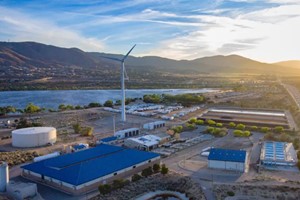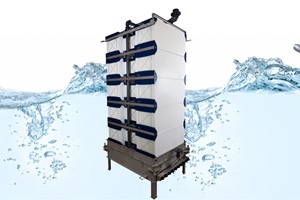The electronics industry produces all of the devices to support life in an increasingly tech-focused world, including everything from mobile devices and televisions to industrial electronics and telecommunications components. At the core of the electronics industry is the semiconductor sector, which is responsible for producing the chips that are needed for manufacture of devices across other electronics industry sectors. Indeed, semiconductor sales are higher than ever—and that’s despite the semiconductor sector and the broader electronics industry navigating challenges including recent supply chain disruptions and rising environmental concerns.
Here, we’ll look at a few industry trends impacting the electronics industry, specifically with an eye on how these trends may impact water use for electronics and semiconductor manufacturers in the years to come.
Water Use in The Electronics Industry
Companies in the electronics industry use a moderately high amount of water and energy to power their operations. Facilities draw feedwater for things like cooling equipment and HVAC systems, as well as other general purposes like maintenance and landscaping. Semiconductor fabrication plants—or “fabs” as they’re commonly known— are particularly resource-intensive, as they tend to require lots of energy and water. This is because they use a polishing process during manufacturing which results in deposition of a residue on semiconductor chips. To ensure that the chips function as intended, this residue must be removed, and this is accomplished by rinsing the chips with ultrapure water. Fabs must use significant amounts of water and energy to produce ultrapure water, using water treatment processes like filtration, activated carbon, reverse osmosis, degasification, and electrodeionization to remove contaminants and achieve a very high level of purity.
Additionally, electronics facilities produce wastewater streams that typically need some form of treatment before they are released the environment or to a receiving facility. This is because they contain potentially hazardous contaminants including heavy metals, toxic solvents, and can be very acidic.
Water Treatment Trends in The Electronics Industry
Due mainly to an increasing emphasis on environmental concerns, and interest in controlling costs associated with sourcing water and disposing of wastewater and brine streams, chip fabs are increasingly adopting water recycling programs to reduce overall water use. In fact, in July 2022, major semiconductor producer Intel announced it achieved net positive water use in the US, Costa Rica, and India, and it has plans to expand the initiative in other countries where it operates.
To achieve these kinds of ambitious goals, those in the electronics industry are increasingly employing water recycling and reclamation initiatives. These types of strategies entail capturing wastewater streams for reuse within the facility. Depending upon the nature of the wastewater, and the target reuse application, treatment needs may range from minimal to moderately involved. Facilities have flexibility in how they choose to implement reuse strategies, such as by combining multiple wastewater streams for treatment and reuse, or by opting to reclaim only the “cleanest” or most suitable streams, such as by reclaiming used rinse water for cooling, for example.
Fabs and other electronics manufacturers are also increasingly opting to implement other types of reduction measures, including by upgrading production equipment and/or water treatment equipment with newer or more efficient technologies. Fabs can also look at their existing processes to identify opportunities for water savings, such as by using counter-current rinses, or reducing the number or duration of rinse cycles without compromising on chip quality. Similarly, cooling towers can be an excellent target for water reduction efforts. Facilities who use evaporative towers can potentially reduce water use by converting to dry or wet/dry towers, for example, by treating feedwater, or by installing means of capturing water vapor for reuse. Electronics manufacturers and industrial facilities more generally are also investing in water use reduction efforts in a number of other interesting ways, such as by using low-flows sinks and toilets. While these types of water reduction approaches entail costs, some of which are significant, they may well pay off in the long run, as these types of investments may help companies to better cope with challenges such as market volatility and rising competition, by insulating themselves against rising costs for water, energy, and waste discharge permits.














